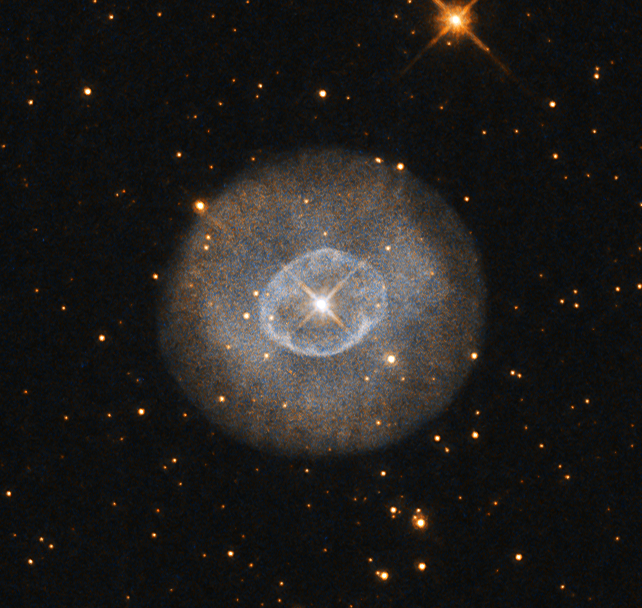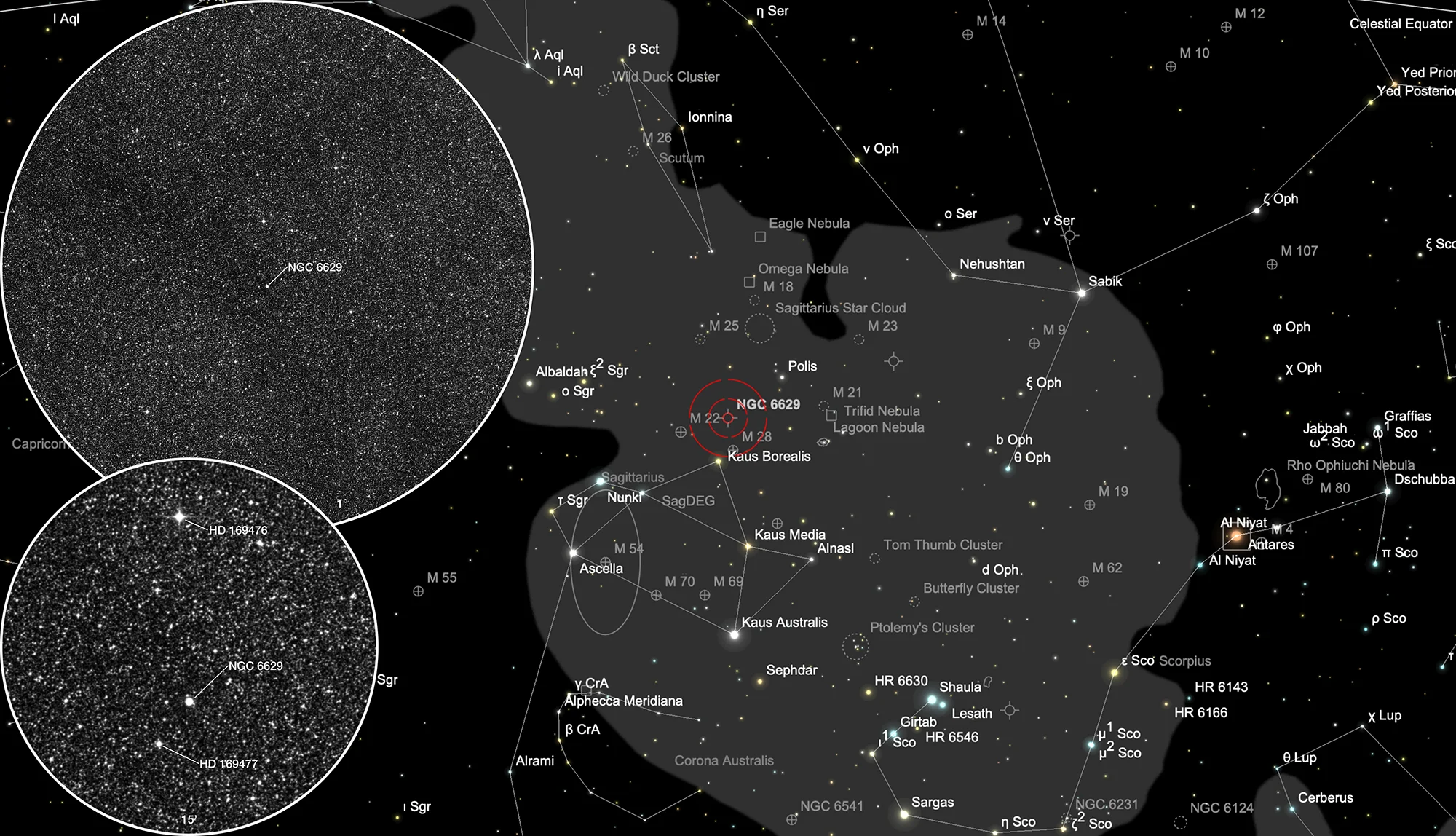Planetary Nebula NGC 6629

History
This planetary nebula was discovered by William Herschel on 7 August 1784 using his 18.7-inch telescope. He classified it as a «faint nebula» and logged it as II 204, adding the notes: «Pretty bright, small, stellar, not verified.» [463] John Herschel observed the nebula on 27 June 1837 from South Africa, listed it as h 3744 and noted: «Pretty bright; very small; 4" at the utmost in diameter; a good deal furry at the edges, and doubtful if not a little brighter in the middle. It is not a 'stellar nebula' but rather alink between a planetary and a globular; is probably a very distant and highly compressed globular cluster; has a star 9m 3' distance, south following; night superb and vision perfect. This is one of the smallest if not the vey smallest nebulous object I remember to have seen. It is a very remarkable object.» [11]
In 1915 Knox-Shaw reported it was a not a globular cluster, but a planetary nebula, based on a photograph taken at the Helwan Observatory with the Reynolds reflector. Curtis (1918) reported «..the central star is about mag 13. The nebular disk is 16"x14" in p.a. 150°, and is nearly equal density throughout, without ansae or other structural details.» (Crossley photograph). [364]
Physical Properties
NGC 6629 is an elliptical, almost round planetary nebula. Its size down to the 10% level is 16.6" × 15.5", surrounded by a halo of about 40" diameter, which is more compressed on the northern side.
| Designations | PN G009.4-05.0: NGC 6629, PK 9-05.1, ARO 30, ESO 522-26, He 2- 399, Sa 2-335, VV 179, VV' 403, Wray 15-1869 |
| Right Ascension (J2000.0) | 18h 25m 43s |
| Declination (J2000.0) | -23° 11' 59" |
| Dimensions | 15.5" (optical) |
| Distance | 2.0 kpc |
| Radial Velocity | +14.0 ± 3.0 km/s |
| Expansion Velocity | < 6.0 (O-III) 6.5 (N-II) km/s |
| C-Star Designations | AG82 308, CD -23 14350, GCRV 10893, HD 169460 |
| C-Star Magnitude | B: 13.26, V: 12.93 |
| C-Star Spectral Type | Of(H) |
| Discoverer | HERSCHEL 1868 |
Finder Chart
The planetary nebula NGC 6629 is located above the Teapot of the constellation Sagittarius. On 28 June it is in opposition to the Sun and crosses the meridian at local midnight. The best time for observing is from February to December.
